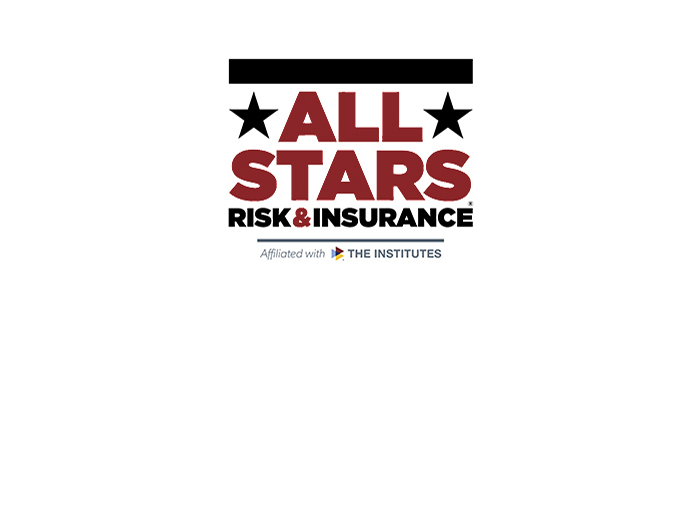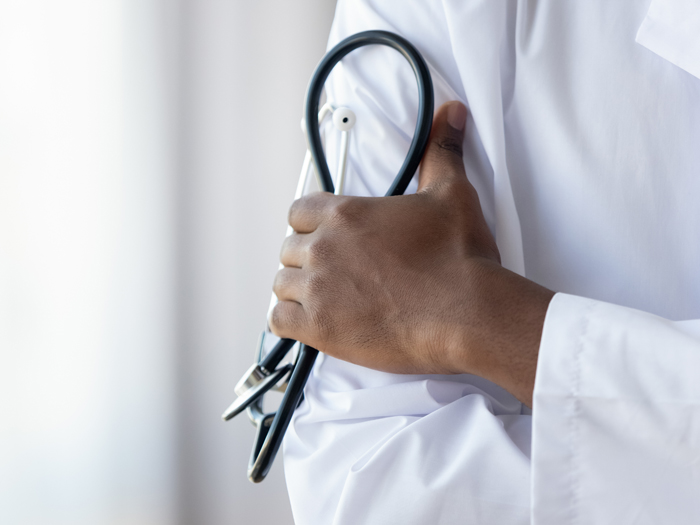Infrastructure and Health Care: Where the Roads Meet to Provide Essential Services

An ambulance rushes down a highway in the midst of a storm.
Rain pours from the sky, making visibility almost non-existent for the driver. Wind screeches around him. Roads are flooding quickly, when suddenly the driver encounters a downed tree that has damaged a bridge he needs to cross to make it to the hospital.
Though fictive, this scenario illustrates the crucial connection between infrastructure and health care. Ambulances and cars use roads and bridges to get to hospitals. People without cars use public transit to make it to their medical appointments.
Without infrastructure that can keep roads from flooding or strong roads and bridges, accessing health care can become difficult, if not impossible, especially in the face of increasingly stronger storms brought on by volatile weather patterns.
Future peak losses for both hurricane season and multiple secondary peril events could climb as high as $250–300 billion, per a report on natural catastrophes from Swiss Re, making improvements to infrastructure even more critical.
“Infrastructure can have a huge impact on health care delivery,” said Shep Tapasak, senior vice president of specialty underwriting with ProAssurance Companies.

Shep Tapasak, senior vice president of specialty underwriting, ProAssurance Companies
Now, a new proposal from the Biden administration aims to make health care and other essential services more accessible through sweeping updates to infrastructure.
The $3 trillion proposal includes funding for repairing roads and bridges, improving funding for transportation and increasing access to services like WiFi and broadband, which could help rural communities access health care services like telemedicine.
Negotiations over the proposal with Republicans are currently underway, though Energy Secretary Jennifer Granholm has said that the President is willing to push the bill through without bipartisan support if need be. Speaker of the House Nancy Pelosi has promised a bill before July 4.
Where Infrastructure and Health Care Intersect
One of the easiest ways to see the connection between infrastructure and health care is through thinking about the ways in which people access health care services. Most people either jump in the car or take public transportation for non-emergency services.
If a natural catastrophe wipes out a road or floods a subway tunnel, it can make health care inaccessible — sometimes with disastrous consequences. That’s why it’s important for both health care systems and infrastructure to be resilient.
“Infrastructure and health care, for the most part, connect around resiliency,” Tapasak said.
For health care systems, that can mean planning alternative routes for ambulances and other emergency services to take in case of road flooding or bridge collapse. For governments and municipalities, it means making sure roads, bridges and public transportation systems can withstand strong winds and rains.
Currently, U.S. infrastructure is in sore need of an update. The American Society of Civil Engineers gave the country’s infrastructure a C- rating and they estimate it will take $2.6 trillion to fix it over the next 10 years.
“I don’t think there’s much disagreement that the U.S. has not invested enough to keep up with infrastructure issues and needs,” Tapasak said. “I would say that we tend to be more reactive. And I think part of this is because of the sticker shock.”
Biden’s $3 trillion proposal allocates $115 billion to modernize highways, with an additional $20 billion for road safety and bridge repairs, $85 billion for public transit and another $17 billion to inland waterways, ports and ferries.
Infrastructure issues like collapsing bridges and flooding roads have made it difficult if not impossible for people to access health care in the past.
During Hurricane Matthew in 2016, a major highway collapsed in Florida making it difficult for people to travel through the state. In North Carolina, sections of Interstate 95 were shut down due to flooding and a road was washed out.
Hurricane Katrina saw collapsing bridges, hospital closures and inadequate emergency response from the government contributed to health care disparities that lasted well after the storm ended.
“During Hurricane Matthew, you had a major highway that essentially collapsed. That major highway, which was taking people where they needed to go, getting people to local hospitals, collapsed and was out of commission for weeks,” Tapasak said. “There were hundreds of road closures and dozens of bridges knocked out in Katrina. Infrastructure and health care are clearly connected.”
“Many hospitals and long-term care facilities have not been able to meet the needs of the communities that relied on them because they couldn’t accommodate the failures of the infrastructure,” he continued.
>These problems will only continue to worsen as global climate change increases the strength and frequency of storms. Future peak losses for both hurricane season and multiple secondary peril events could climb as high as $250–300 billion, making improvements to infrastructure even more critical.
Access to Health Care Is an Infrastructure Issue
In addition to making sure roads and bridges are safe and reliable, Biden’s infrastructure proposal could help increase access to health care services like telemedicine to rural communities.
Currently, rural communities are facing a dual crisis with a physician shortage and a lack of access to WiFi and broadband services.
By 2032, the U.S. is expected to face a shortage of nearly 122,000 physicians, according to The Association of American Medical Colleges, many of them in rural communities.
Of the 7,200 regions in the U.S. classified as Health Professional Shortage Areas, nearly 60% are in rural areas, according to reporting from the Medical Economics Journal.
While telemedicine services could help reduce the effects of the physician shortage, rural communities often don’t have the access to the WiFi or broadband needed to access those services.
In 2020, the Federal Communications Commission reports that more than 18 million Americans, or 5.6% of the country’s population, lacks access to high-speed internet, though it’s thought that number is much higher.
“Internet access and broadband could be overlooked as being viewed as infrastructure,” Tapasak said.
In his infrastructure proposal, Biden budgets $100 billion for digital infrastructure in an attempt to make high-speed broadband available across the nation. If this makes it into the final bill and if that bill becomes law, it could make services like telemedicine more accessible to rural communities, closing some of the projected physician gap.
“If we take the position that telehealth will continue to play an increasingly important role in the future of health care, help us reduce health care costs, and improve access, then I think it’s easy to agree that internet access and availability will be increasingly important and that should not be overlooked,” Tapasak said.
Increased access for rural communities could help continue the telehealth boom spurred by the pandemic. Currently, about 20% of current U.S. health care spending could be done through virtual care options, according to a 2020 report from McKinsey.
If McKinsey’s prediction bears out, video appointments and tools like wearable technologies will become commonplace within health care fields, making access to digital technologies as critical a piece of infrastructure as the roads and bridges patients currently take to get to the doctors. If the proper digital infrastructure is in place, these tools can help improve access to health care, especially for rural communities.
“Wearable technologies and telehealth will help us bridge some of the gaps we have today in terms of access to health care,” Tapasak said. &










